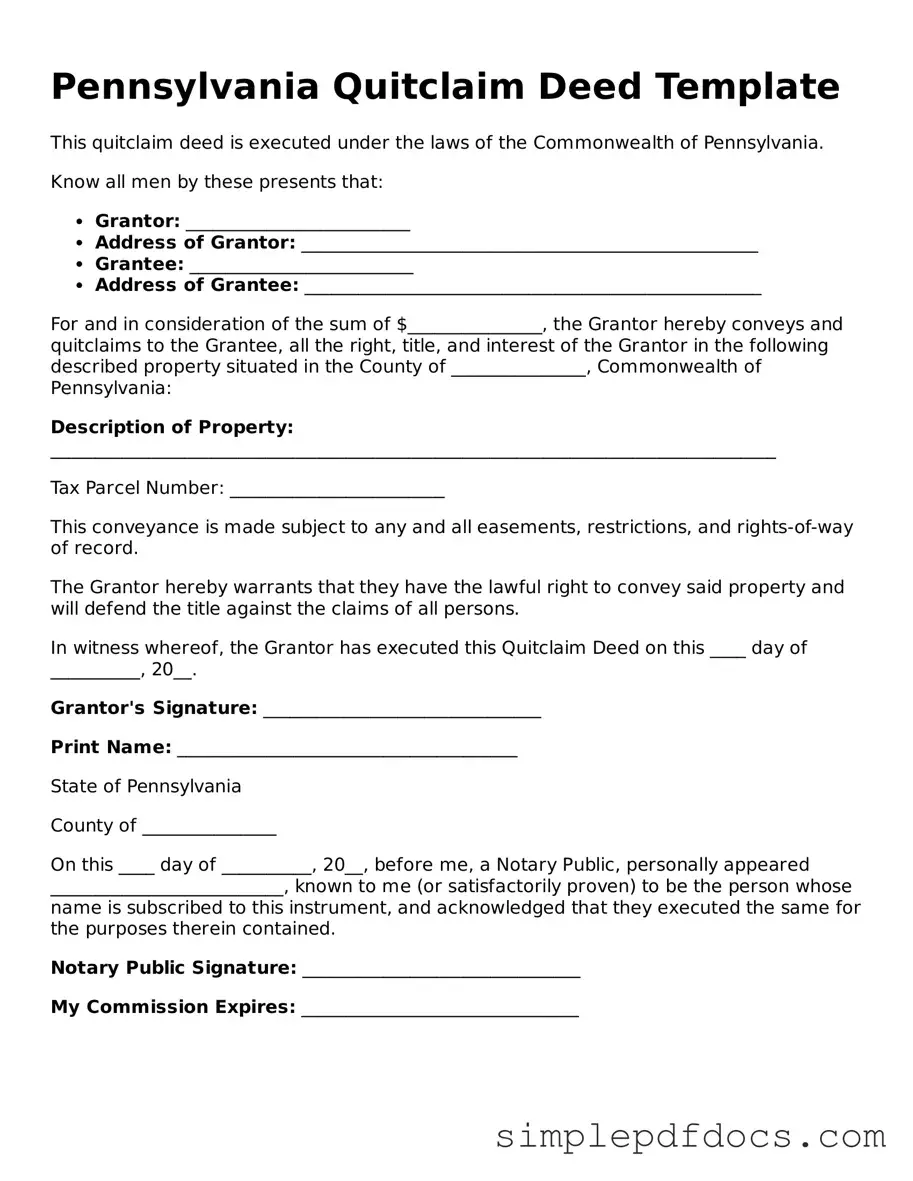Legal Quitclaim Deed Document for the State of Pennsylvania
A Quitclaim Deed is a legal document used in Pennsylvania to transfer ownership of real estate from one party to another without guaranteeing the title. This form allows the grantor to relinquish any claim they may have to the property, but it does not provide any warranties regarding the property's title. Understanding this form is essential for anyone involved in property transactions in the state.
Get Document Here
